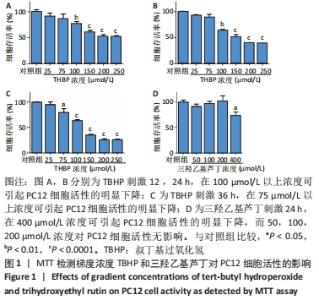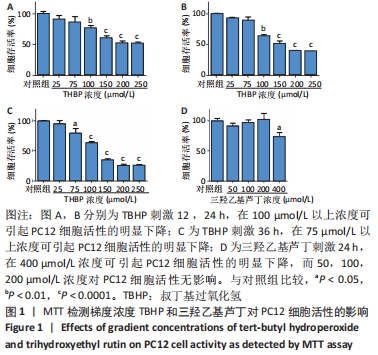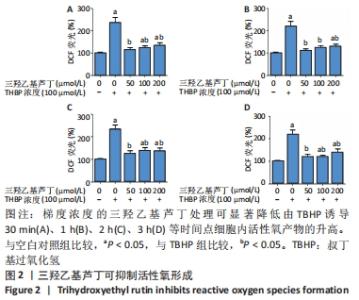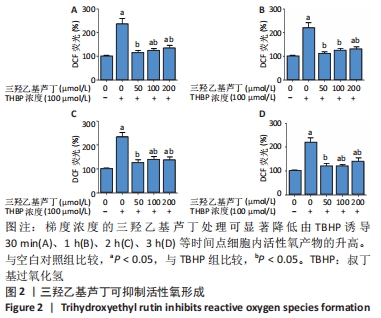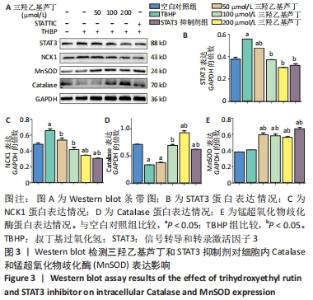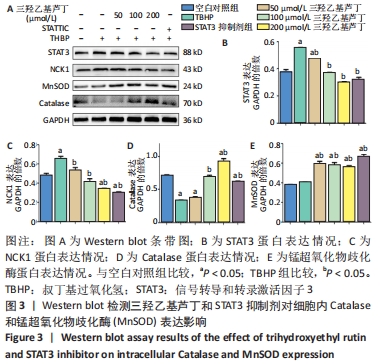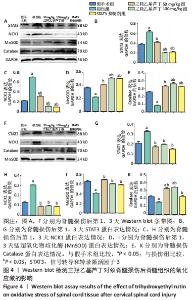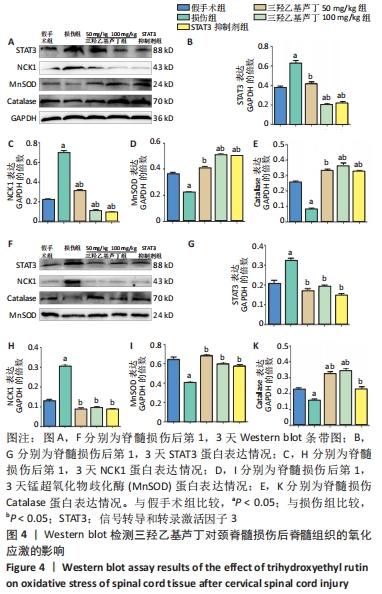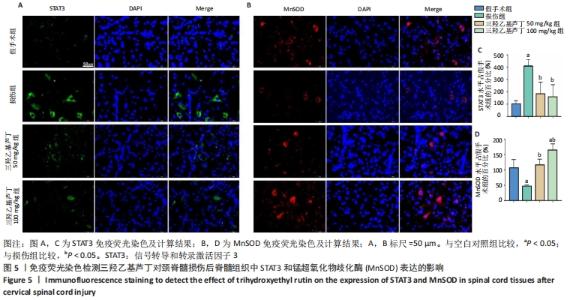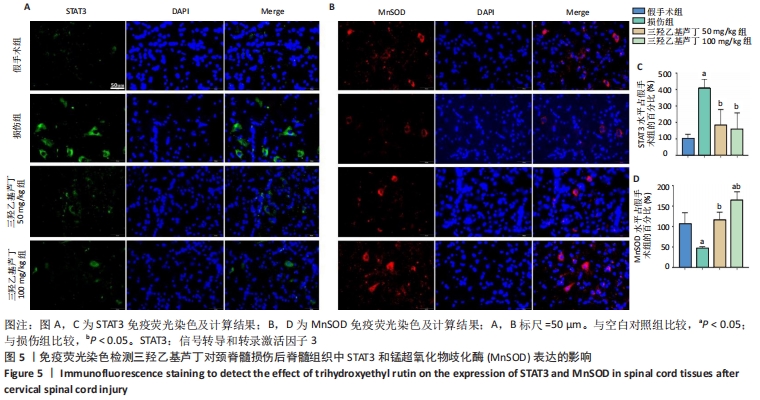[1] KIM YH, HA KY, KIM SI. Spinal Cord Injury and Related Clinical Trials. Clin Orthop Surg. 2017;9(1):1-9.
[2] VISAVADIYA NP, PATEL SP, VANROOYEN JL, et al. Cellular and subcellular oxidative stress parameters following severe spinal cord injury. Redox Biol. 2016;8:59-67.
[3] MAGALINGAM KB, RADHAKRISHNAN A, HALEAGRAHARA N. Protective effects of quercetin glycosides, rutin, and isoquercetrin against 6-hydroxydopamine (6-OHDA)-induced neurotoxicity in rat pheochromocytoma (PC-12) cells. Int J Immunopathol Pharmacol. 2016;29(1):30-39.
[4] HAO G, DONG Y, HUO R, et al. Rutin Inhibits Neuroinflammation and Provides Neuroprotection in an Experimental Rat Model of Subarachnoid Hemorrhage, Possibly Through Suppressing the RAGE-NF-kappaB Inflammatory Signaling Pathway.Neurochem Res. 2016;41(6):1496-1504.
[5] LIU H, ZHONG L, ZHANG Y, et al. Rutin attenuates cerebral ischemia-reperfusion injury in ovariectomized rats via estrogen-receptor-mediated BDNF-TrkB and NGF-TrkA signaling. Biochem Cell Biol. 2018; 96(5):672-681.
[6] LI W, LI DY, ZHAO SM, et al. Rutin attenuates isoflurane-induced neuroapoptosis via modulating JNK and p38 MAPK pathways in the hippocampi of neonatal rats. Exp Ther Med. 2017;13(5):2056-2064.
[7] JANG JW, LEE JK, HUR H, et al. Rutin improves functional outcome via reducing the elevated matrix metalloproteinase-9 level in a photothrombotic focal ischemic model of rats. J Neurol Sci. 2014; 339(1-2):75-80.
[8] KHAN MM, AHMAD A, ISHRAT T, et al. Rutin protects the neural damage induced by transient focal ischemia in rats. Brain Res. 2009;1292:123-135.
[9] 刘雅普,苏圆圆,刘祺,等.三羟乙基芦丁对大鼠颈脊髓损伤后神经功能恢复的影响[J].中国脊柱脊髓杂志,2020,30(5):437-446.
[10] CHEN X, CHEN C, HAO J, et al. AKR1B1 Upregulation Contributes to Neuroinflammation and Astrocytes Proliferation by Regulating the Energy Metabolism in Rat Spinal Cord Injury. Neurochem Res. 2018; 43(8):1491-1499.
[11] BAINS M, HALL ED. Antioxidant therapies in traumatic brain and spinal cord injury. Biochim Biophys Acta. 2012;1822(5):675-684.
[12] ROHN TT, HINDS TR, VINCENZI FF. Ion transport ATPases as targets for free radical damage. Protection by an aminosteroid of the Ca2+ pump ATPase and Na+/K+ pump ATPase of human red blood cell membranes. Biochem Pharmacol. 1993;46(3):525-534.
[13] KONG G, HUANG Z, JI W, et al. The Ketone Metabolite beta-Hydroxybutyrate Attenuates Oxidative Stress in Spinal Cord Injury by Suppression of Class I Histone Deacetylases. J Neurotrauma. 2017; 34(18):2645-2655.
[14] WU J, MAOQIANG L, FAN H, et al. Rutin attenuates neuroinflammation in spinal cord injury rats. J Surg Res. 2016;203(2):331-337.
[15] ZHAI X, DING Y, WANG Q, et al. Rutin Acid Ameliorates Neural Apoptosis Induced by Traumatic Brain Injury via Mitochondrial Pathways in Mice. Neuroimmunomodulation. 2016;23(3):179-187.
[16] SONG HL, ZHANG X, WANG WZ, et al. Neuroprotective mechanisms of rutin for spinal cord injury through anti-oxidation and anti-inflammation and inhibition of p38 mitogen activated protein kinase pathway. Neural Regen Res. 2018;13(1):128-134.
[17] CUI M, MA X, SUN J, et al. Effects of STAT3 inhibitors on neural functional recovery after spinal cord injury in rats. Biosci Trends. 2017; 10(6):460-466.
[18] WANG W, LIU R, XU Z, et al. Further insight into molecular mechanism underlying thoracic spinal cord injury using bioinformatics methods. Mol Med Rep. 2015;12(6):7851-7858.
[19] XU NW, CHEN Y, LIU W, et al. Inhibition of JAK2/STAT3 Signaling Pathway Suppresses Proliferation of Burkitt’s Lymphoma Raji Cells via Cell Cycle Progression, Apoptosis, and Oxidative Stress by Modulating HSP70. Med Sci Monit. 2018;24:6255-6263.
[20] NUVOLI B, CAMERA E, MASTROFRANCESCO A, et al. Modulation of reactive oxygen species via ERK and STAT3 dependent signalling are involved in the response of mesothelioma cells to exemestane. Free Radic Biol Med. 2018;115:266-277.
[21] LI L, LI M, LI Y, et al. Exogenous H2S contributes to recovery of ischemic post-conditioning-induced cardioprotection by decrease of ROS level via down-regulation of NF-kappaB and JAK2-STAT3 pathways in the aging cardiomyocytes. Cell Biosci. 2016;6:26.
|
